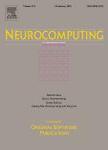版权所有:内蒙古大学图书馆 技术提供:维普资讯• 智图
内蒙古自治区呼和浩特市赛罕区大学西街235号 邮编: 010021

作者机构:Nanjing Univ Sci & Technol Nanjing 210094 Jiangsu Peoples R China
出 版 物:《NEUROCOMPUTING》 (神经计算)
年 卷 期:2019年第332卷
页 面:119-128页
核心收录:
学科分类:08[工学] 0812[工学-计算机科学与技术(可授工学、理学学位)]
基 金:National Natural Science Foundation of China [11773018, 11503010] Fundamental Research Funds for the Central Universities Qing Lan Project Open Research Fund of Jiangsu Key Laboratory of Spectral Imaging and Intelligence Sense Natural Science Foundations of China Key Research & Developement programs in Jiangsu China [BE2018126]
主 题:Infrared images Enhancement Deep learning Encoder-decoder network Residual network Generative adversarial network
摘 要:In this paper, we propose a deep learning method for single infrared image enhancement. A fully convolutional neural network (CNN) is used to produce images with enhanced contrast and details. The conditional generative adversarial networks are incorporated into the optimization framework to avoid the background noise being amplified and further enhance the contrast and details. The existing convolutional neural network architectures, such as residual architectures and encoder-decoder architectures, fail to achieve the best results both in terms of network performance and application scope for infrared image enhancement task. To address this problem, we specifically design a new refined convolutional neural architecture that produces visually very appealing results with higher contrast and sharper details compared to other network architectures. Visible images are used for training since there are fewer infrared images. Proper training samples are generated to ensure that the network trained on visible images can be well applied to infrared images. Experiments demonstrate that our approach outperforms existing image enhancement algorithms in terms of contrast and detail enhancement. Code is available at https://***/Kuangxd/IE-CGAN. (C) 2018 Elsevier B.V. All rights reserved.